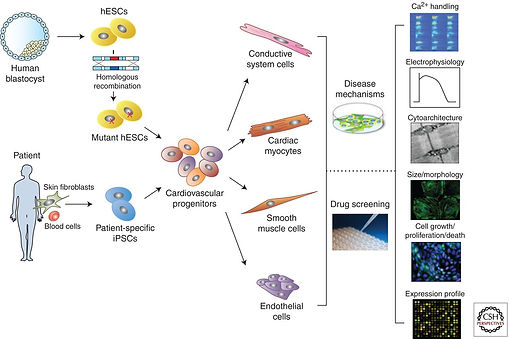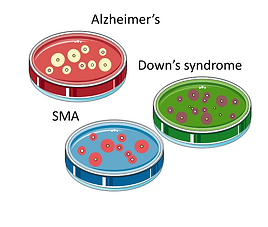
Stem Cells: The Building Blocks of Life
Disease models, derived from human iPSCs, allow scientists to study diseases at the molecular level. Although much is known about the symptoms of diseases, not much is known about the development of diseases. With a comprehensive understanding of disease mechanisms, scientists can provide more accurate diagnoses and create better treatments.
Often, by the time a disease is diagnosed, it has been present in the human body for a length of time. Therefore, rarely are scientists able to study the development of diseases. Huntington's disease, an inherited neurodegenerative disease that currently has no cure, can be studied through disease modeling. Using the models, scientists hope to identify any changes that the brain undergoes before the onset of the disease symptoms. By doing so, they can potentially diagnose the disease in its early stages, and slow its progression.

Disease Modeling
Cardiovascular disorders are the leading cause of death in the United States. However, scientists do not have a clear understanding as to how the disorder develops. For years, scientists have used mouse models in their research. However, mice hearts differ from human hearts both biologically and mechanically; for example, the hearts have different heart rates and respond differently to exercise. Stem cell based models provide a more accurate representation of the human heart. Currently, scientists are able to develop disease specific and patient specific disease models in vitro.
Among the many incurable diseases currently modeled with stem cells are Alzheimer's disease, Down's syndrome, and spinal muscular atrophy. Disease models will help scientists to surpass the barriers that have impeded them from finding viable treatments.
